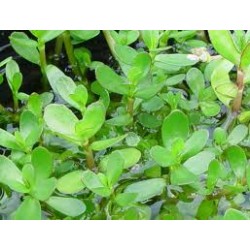1. Organic Farming is better for wildlife
A report by Britain’s Soil Association shows that wildlife is substantially richer and more varied on organic than on conventional farms. A typical organic field has five times as many wild plants, 57% more species, and 44% more birds in cultivated areas than a regular farm. Two 1996 studies show that organic farms have twice as many skylarks, and twice as many butterflies. Every time we eat an organic lettuce or tomato, we help restore wildlife.
2. Organic farming is better for the soil
Studies show that organic fields have deeper vegetation, more weed cover, and contain 88% more ‘epigeal arthropods’ (squiggly soil creatures). A new Swiss study demonstrates that organic soils have more soil microbes, more mycorrhizae – the fungi that attach themselves to the tips of plant roots and help plants absorb nutrients – and more earthworms. It found that soil insects are twice as abundant and more diverse in organic plots, including pest-eating spiders and beetles.
3. Organic food is better for animal reproductions
Out of 14 animal studies, ten showed that animals fare better when fed organic food. Three showed no difference, and one showed an improvement with conventional food. We are all mammals, so we share a lot in common. Female rabbits fed on organic food have twice the level of ovum production; chickens fed on organic food have a 28% higher rate of egg production. Rabbits that were fed conventional food saw a decline in fertility over three generations, compared to no decline for organically fed rabbits. Meanwhile, many human couples find it hard to have a baby….
4. Organic food helps fight cancer, stroke and heart problems
In a recent study, Scottish scientists found that organic vegetable soups contain almost six times as much salicylic acid as nonorganic vegetable soups. Eleven brands of organic soup had 117 nanograms per gram, versus just 20 nanograms in 24 types of non-organic soup6. Salicylic acid is the main ingredient in aspirin; it helps fight hardening of the arteries and bowel cancer, and is produced naturally in plants as a defence against stress and disease. If plants don’t have to resist bugs because of pesticideuse, they generate less salicylic acid, and pass less on to us. The same scientists found significantly higher concentrations of salicylic acid in the blood of vegetarian Buddhist monks, compared with meat-eaters.
5. Organic food contains more nutrients
According to a recent study by the Globe and Mail and CTV News of the nutrient quality of fruit and vegetables, compared to 50 years ago, today’s regular fruit and vegetables contain dramatically less vitamins and minerals7. The average potato has lost 100% of its vitamin A, 7% of its vitamin C and iron, 28% of its calcium, 50% of its riboflavin, and 18% of its thiamin. Out of seven key nutrients studied, only niacin levels increased. Similar results applied to 24 other fruits and vegetables. For broccoli, all seven nutrients fell, including a 63% decrease in calcium and a 34% decrease in iron. No wonder we are gulping down the supplements. In April 2001, however, a US study examined 41 comparisons of the nutrient levels in organic and regular foods. In every case, the organic crops had higher nutrient levels – 27% more vitamin C, 29% more iron, 14% more phosphorus8. At the June 2001 meeting of the American Chemical Society, a chemistry professor reported that organic oranges contained up to 30% more vitamin C than regular oranges, even though they are half the size. (Conventional orange trees are fed nitrogen fertilizer, causing the fruit to absorb more water, which makes them bigger.) In a French study, a cancer specialist studying the nutrient qualities of food grown in the Languedoc-Roussillon region of France showed that for the twelve foods where his study is complete, the organic foods showed increased quantities of vitamins A, C, E, and the B group, increased elements such as zinc, increased minerals such as calcium, and increased fibre.
6. Organic Apples are ….. just better
From 1994 to 1999, a soil scientist at Washington State University ran a series of tests comparing apple orchards. The organic orchard had the best soil, held water better, and resisted soil damage better. It was more energy efficient, and required less labour and less water per apple. The organic apples were firmer, tasted sweeter and were less tart to a non-expert panel. The organic orchard also made more money, since the apples sold for a higher price.
7. Organic farming can feed the world
In a 2002 Greenpeace report, the authors found that organic and agro-ecological methods of growing in the Southern hemisphere produced a dramatic increase in yields, as well as reduced pests and diseases, greater crop diversity, and improved nutritional content. In the Tigray, Ethiopia, organic crops raised 3-5 times more food than chemically treated plots; in Brazil, maize yields increased by 20 – 250%; in Peru, uplands crop yields increased by 150%. In 1998, the Rodale Institute in Kutztown, Pennsylvania, published the results of a 15-year study that compared 3 ways of growing maize and soybeans – a conventional chemical rotation method, an organic system involving crop rotation and legume crops, and an organic system using cow manure. The yields were similar for all three systems, debunking the myth that organic methods cannot feed the world. In Britain, an experiment run at Broadbalk by the Rothamsted Experimental Station for 150 years has shown that wheat yields on manured plots average 3.45 tonnes per hectare, compared to 3.40 tonnes on the chemically fertilized plots.
A recently completed 21-year Swiss study, on the other hand, showed that organic yields were 20% smaller than conventional yields. The organic plots required 34% to 53% less fertilizer and energy and 97% less pesticide, however, and produced more food per unit of energy and fertilizer. The soil microbes, flora, fauna and soil fertility also increased, leading the study’s authors to conclude that the ecological benefits of organic farming make up for the reduced harvest.
8. Organic farming protects the climate
Organic soil is full of living creatures, which carry carbon. In the Rodale experiment, the organically managed plot stored much more carbon than the conventional plot. In the Broadbalk experiment, soil fertility increased by 120% in the manured plots, versus 20% in the chemical plots. The same results occurred in the Swiss experiment. A study in California’s Central Valley showed that as well as producing similar yields and suffering similar pest damage, organically managed fields produced 28% more organic carbon. By storing more carbon in the soil, organic farmers help to stop global climate change.
9. Organic farming produces higher yields in drought conditions
In a review of comparative studies of grain and soybean production in the US Midwest, organic growers produced higher yields in drier climates and during droughts (and similar yields in regular conditions). The same results were found in the Rodale experiment. Organic matter makes the soil less compact and more moisture retentive, allowing the roots to penetrate more deeply to find water.
10. Organic food is safer
Organic farming generates more jobs, produces more profits, and doesn’t pollute groundwater with nitrogen run-off. It also avoids all the risks associated with GM crops. But let’s finish with the reason why many people start eating organic food – because they believe it is safer. Farmers in Canada, Kansas and Nebraska who use the pesticide 2,4-D suffer a higher rate of non-Hodgkin’s lymphoma (a cancer). The same applies to dogs which play on lawns that have been sprayed. In Sweden, exposure to phenoxy herbicides has been shown to increase the risk of contracting lymphomas six-fold. In the US, the death ates from myeloma (a cancer) are highest in rural farming areas. And so it goes on. Migrant farmworkers suffer an abnormally high rate of multiple myeloma, stomach, prostate and testicular cancer. Organic farming carries none of these risks.
There is a strong association between breast cancer and exposure to chemical pesticides. Atrazine, a common ingredient in pesticides, causes breast cancer in rats, chromosomal breakdown in the ovaries of hamsters, and hind-limb deformities in frogs. A Finish study showed that women whose breasts stored the highest levels of a lindane-like residue were ten times more likely to have breast cancer than women with lower levels. (Lindane is a pesticide).
We can end all this by shifting to organic food. We can be healthier. Our children can be healthier. Our farmers and farm workers can be healthier. Frogs, worms, butterflies, skylarks and the soil itself can be healthier. All that it takes is to turn away from chemically grown food, and embrace organic food.
About Author – Guy Dauncey is the author of Earthfuture: Stories from a Sustainable World (ecotopian short stories) and Stormy Weather: 101 Solutions to Global Climate Change, winner of a Nautilus Award at the New York Book Expo (New Society Publishers). He lives in Victoria.
www.earthfuture.com








































































































